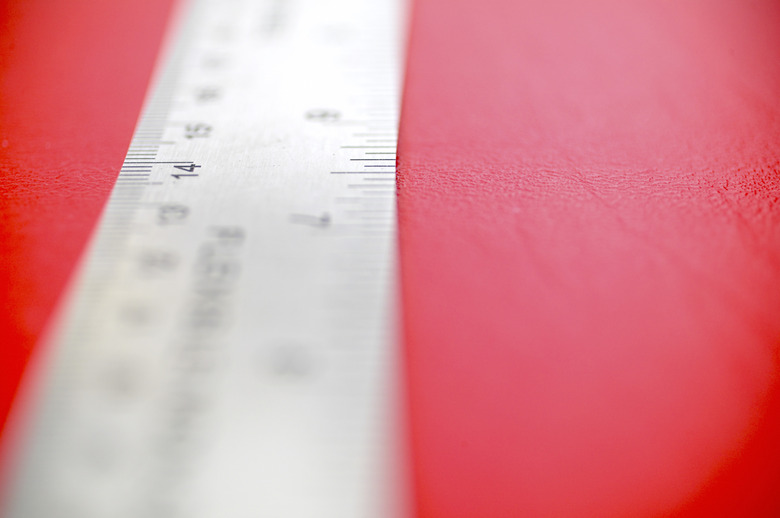Graduation Types On Steel Rulers
Measuring rulers are commonly made of either wood, plastic or steel. Though steel rulers may be the most expensive of the three types, they are also the most durable. The graduation scale printed on a steel ruler is either in imperial or metric increments. To properly use a ruler, it is important to understand the differences between these two systems of measurement.
Imperial System
Imperial System
The imperial system is not as common as the metric system worldwide. However, since the imperial system is the accepted standard in the United States, most steel rulers feature an imperial graduation in inches. Most commonly, an imperial ruler is 12 inches long. Each inch is indicated by a numeral, and further divided into increments of 1/12 inch. In the imperial system, 12 inches is equivalent to 1 ft., a common measurement used for larger distances. This is the reason for the 12-inch length of the common ruler.
Metric System
Metric System
The metric system allows for easier unit conversion, as each progressive unit of measurement consists of 10 increments of the next-smallest unit. For example, there are 10 millimeters in a centimeter, 10 centimeters in a decimeter, and so on. Generally, a metric graduation is included on the opposite side of the ruler from the imperial graduation, allowing for easy measurement in both units. A typical steel ruler features a scale of 30 centimeters, each divided into 10 increments of 1 millimeter each.
Machinist's Scale
Machinist's Scale
A special type of steel ruler is referred to as a "machinist's scale." These types of rulers are often used by mechanics and other professionals who require small, precise measuring increments. The typical machinist's scale ruler is 6 inches long, making the ruler highly portable. Often, the end of the ruler features a hook or stopper to stabilize the device against the edge of what is being measured. Typical imperial machinist's scale rulers are divided into increments of 1/10 inch, while metric machinist's scales are divided into either millimeter or half-millimeter increments.
Using a Steel Ruler
Using a Steel Ruler
A convenient feature of steel rulers is that the material allows for pencil markings and erasures. This enables you to measure an object and quickly mark its length on the ruler itself, which saves you from having to count the length while holding the ruler to the object. Since pencils will not stain the steel material, the marks can be easily erased once you record your measurement elsewhere. Simply mark the object's length on the ruler, record the highest inch or centimeter integer, then count the number of smaller increments to your marking.
Cite This Article
MLA
Eliot, Alexander. "Graduation Types On Steel Rulers" sciencing.com, https://www.sciencing.com/graduation-types-steel-rulers-8792049/. 24 April 2017.
APA
Eliot, Alexander. (2017, April 24). Graduation Types On Steel Rulers. sciencing.com. Retrieved from https://www.sciencing.com/graduation-types-steel-rulers-8792049/
Chicago
Eliot, Alexander. Graduation Types On Steel Rulers last modified March 24, 2022. https://www.sciencing.com/graduation-types-steel-rulers-8792049/
